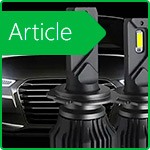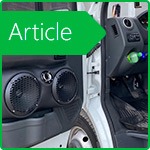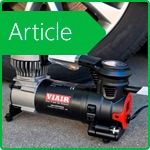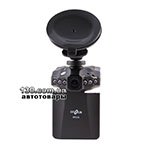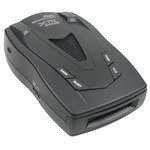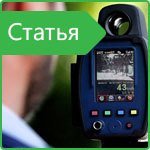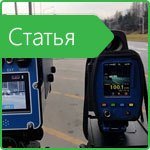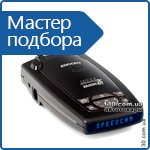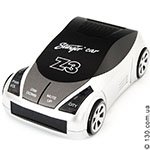Radar Detector: Inside View
Having decided to buy a radar detector, the buyer, in the order of things, is interested in his strengths and weaknesses. But it so happened that the manufacturer, usually, first of all focuses the attention of the buyer on the quality side of the product and tries to avoid providing information about the weak. Already then the user is faced with some problems that would be better known at the stage of purchase. Let's try to look at what is inside the body of the radar detector.
Under the plastic-looking body of the radar detector, which looks beautiful, only one board is hidden. The device is a special receiver of signals that radiates radio frequency and laser radar. We will discuss the purpose of the board elements below.
1. An antenna for receiving radio frequency signals. In the photo you can see that it resembles in shape and appearance a funnel or horn (horn-type antenna), which itself is narrowly focused. Looking at its face, you can determine approximately the angle of orientation. The radar detector can scan the radio frequency signal only if it is directed towards the radar. Hence the conclusion: the installation must be done horizontally and directly on the road.
2. The processing unit of the microwave signal. In this part, the received signal is processed, as well as the interference that can be captured by the device. Typically, the body of this unit performs the function of the radiator (cooling) of the heated circuit elements.
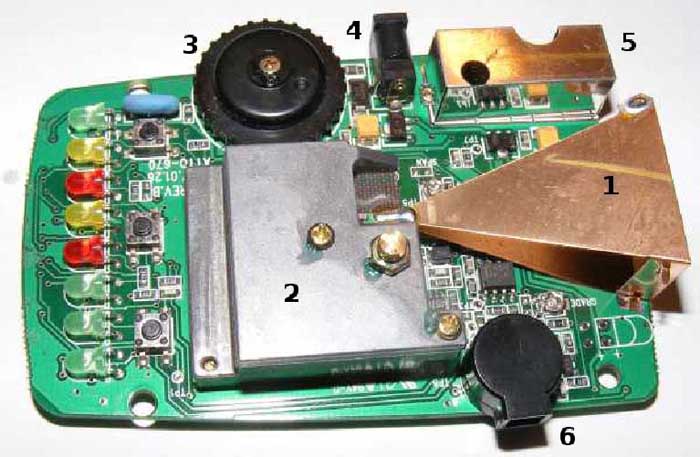
Photo 1. Radar detector Crunch 213B
Unfortunately, not all existing radar detectors can block the processing of the microwave signal processing unit with the heat sink function. For example, Whistler radar detectors consume large amounts of energy and some time after starting operation, the overall temperature of the device rises sharply. In a very hot summer, this will certainly lead to a breakdown of the device.
3. Volume control, switch-in combination. Its role is quite clear, but you need to pay close attention to its reliability. In photo 1 you can see that the regulator from the budget class Crunch 213B radar detectors is quite large and is located so that it is not afraid of shaking and adjustments on the move with a noticeable pressing force.
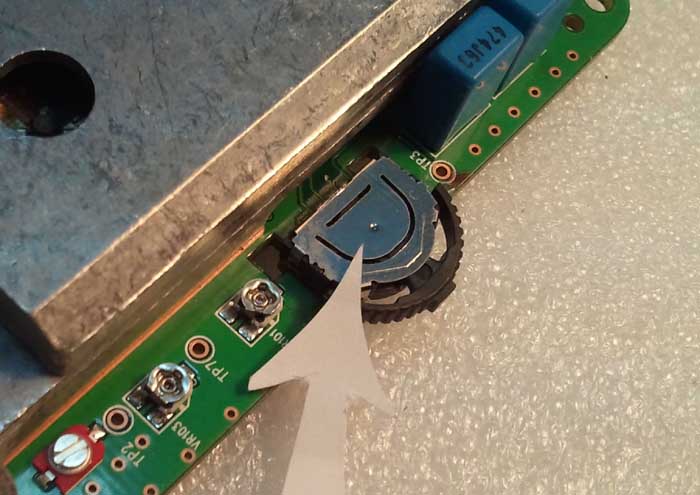
Photo 2. Whistler PRO-series radar detector volume control
Photo 2 shows the sensitivity control of the Whistler radar detector, which already belongs to the Pro series. Its appearance does not promise reliability and durability. In reality, it can only be tested in practice.
Let's look at the first photo. At number 4 there is a connector for power supply to the radar detector, 5-a laser radar processing unit, 6-a sound device, the so-called “buzer”-a piezo emitter, which emits a sound signal. Looking for a radar detector? Buy in Kiev, Odessa, Kharkov can be on 130.com.ua. Delivery in Ukraine.
Number 7 in photo 3 is a signal processor, one of the most basic parts of a radar detector. It primarily depends on the speed of detection of the radar en route. Very often, false alarms are triggered, which are mainly found in Whistler radar detectors, especially on the Pro 78 SE and XTR 555 models.
But the triggering of false alarms is half the trouble. Much worse when the processor does not correctly select the frequency range of the received signal. There was a test in which one of the Whistler radar detectors received an X-band signal, to which the radar detector responded correctly. Then the K-band was sent to it, to which Whistler responded as before-in the X-band.
This is extremely inconvenient and inappropriate. It takes attention, distracts from the road, in other words. Well, where is the guarantee that immediately after a false alarm in the X range, the signal in the K-band cannot be overlooked (or not detected as an obstacle)? But it works predominant number of traffic police radar. As a result-another fine, “photo for memory”, analyzes ... Do you need it? ..

Photo 3. Chunch 213b radar detector backside
See video reviews of radar detectors
Materials on the topic

Stay tuned for updates!
Subscribe to our Telegram channel and be the first to receive useful materials.
Subscribe













